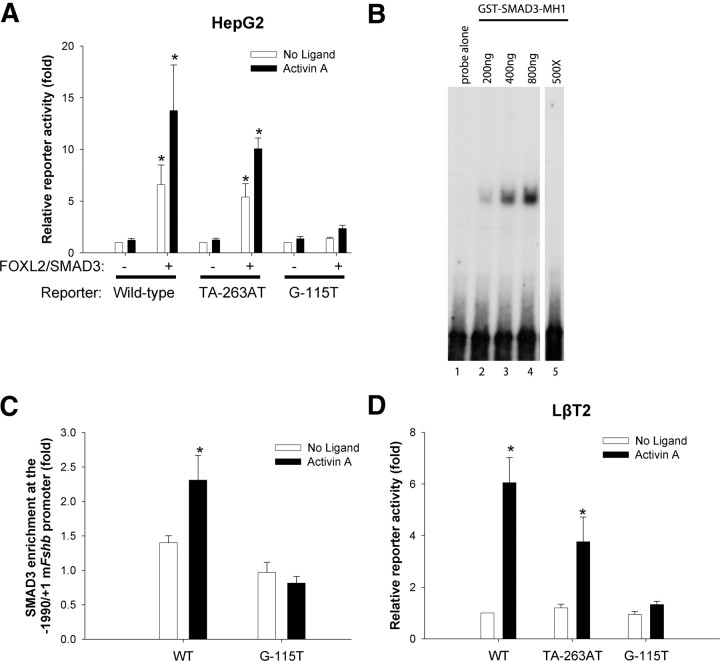Fig. 4.
An SBE adjacent to FBE3 mediates FOXL2/SMAD3 and activin A-induced murine Fshb promoter activity. A, HepG2 cells were transfected and treated as described in Fig. 2D with WT or the indicated mutant −1990/+1 murine Fshb-luc reporters. Data are means of four independent experiments (n = 4). Note that the data for the WT reporter are the same as those from Fig. 2D, because the analyses were run concurrently. B, EMSA using a WT radiolabeled −132/−92 probe containing the 4-bp SBE at −115/−112 and increasing concentrations of recombinant SMAD3-MH1 domain. In lane 5, 500× unlabeled homologous probe was included along with 800-ng recombinant protein. This lane is from the same gel and exposure, but intervening lanes were removed for purposes of presentation. Free probe appears at the bottom. C, LβT2 cells were transfected with WT or G-115T mutant murine −1990/+1 Fshb-luc reporters and stimulated where indicated with 1 nm activin A for 1 h. After ligand treatment, cells were cross-linked and harvested. Sonicated chromatin was immunoprecipitated with IgG or SMAD3 antibody. Input and precipitated DNA were analyzed by qPCR using primers specific to the proximal murine Fshb promoter. The qPCR signal was normalized within each condition as described in Materials and Methods. Data represent the mean (+sem) of the enrichment observed for each condition normalized to the nonspecific (IgG) condition in six independent experiments. D, LβT2 cells were transfected with the indicated −1990/+1 murine Fshb-luc reporters and treated with activin A for 24 h. Data are means (+sem) of four independent experiments (n = 4) and were analyzed by two-way ANOVA (reporter x activin A).

